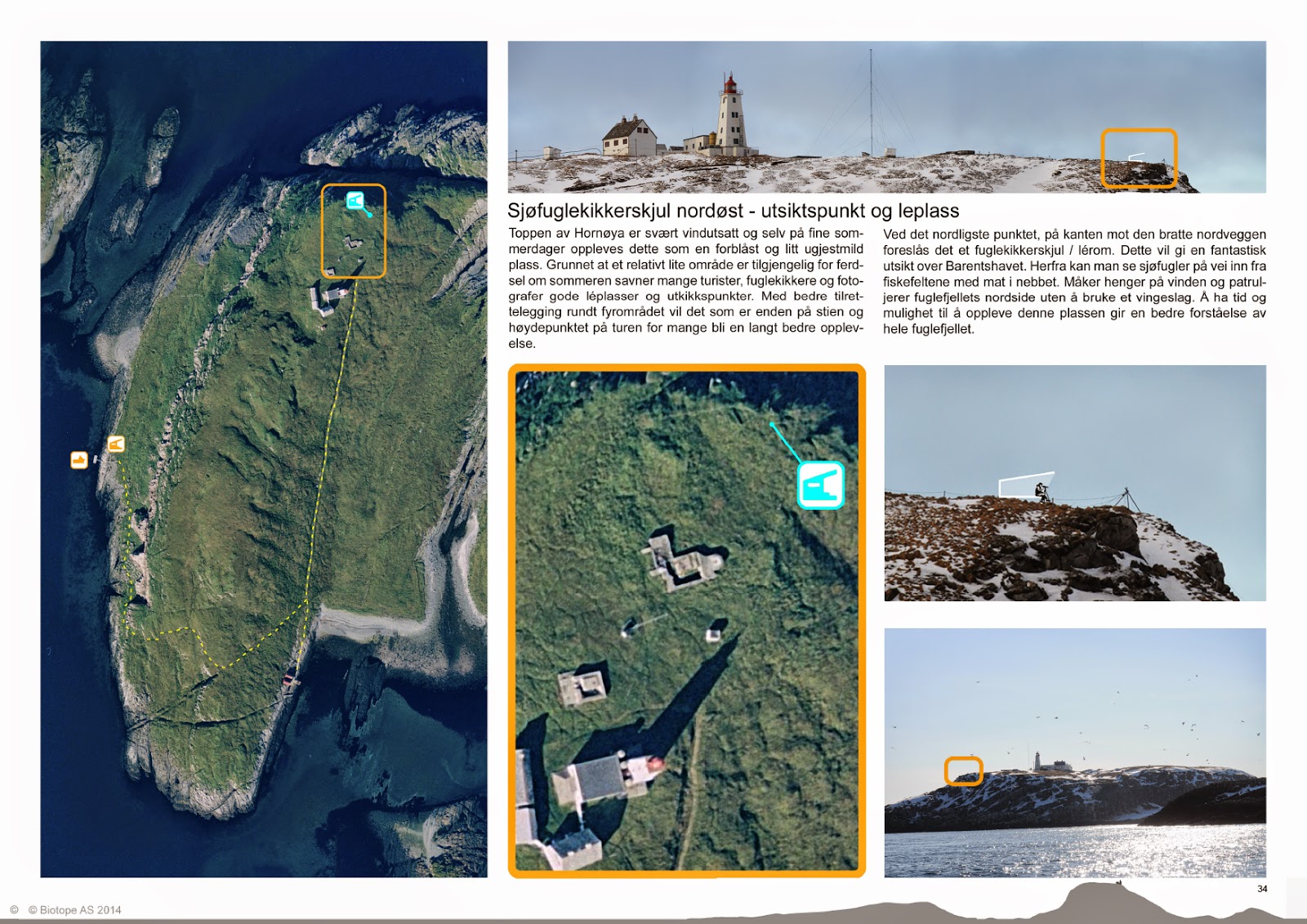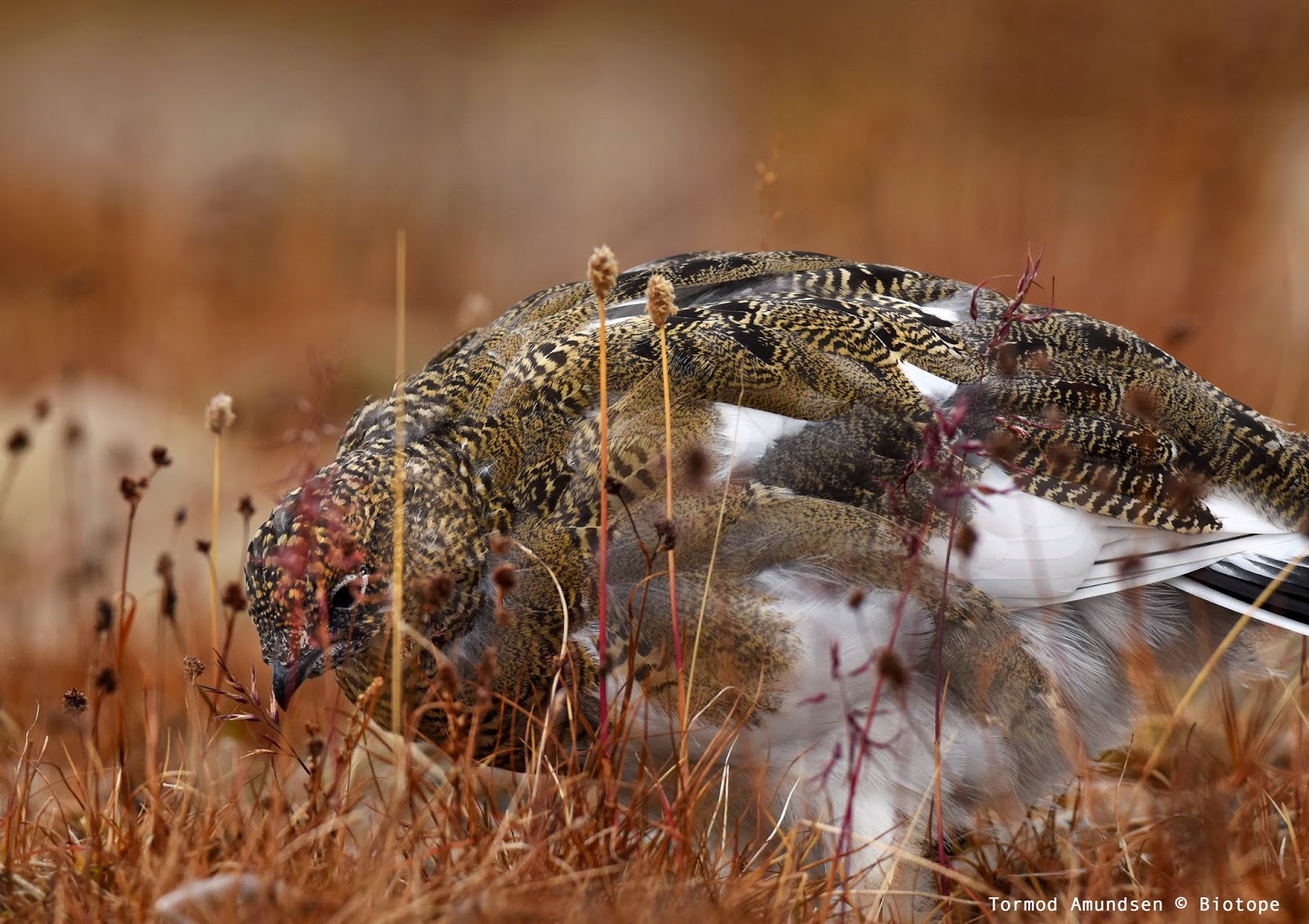Gullfest 2014 was a bit experimental: instead of having a base camp in Vardø like GF2012&13 we designed this years Gullfest to be a tour of Varanger. With our invited guests and contributors we toured Varanger from the Pasvik taiga in the south to Vardø, Vadsø, Vestre Jakobselv and Berlevåg and Båtsfjord in the north. What an amazing experience it was! We managed some spectacular birding, we had three exhibitions, and we gave talks at a pub, a hotel, a guest house, a cultural insititution and a school. Our aim was to inspire people in Varanger with stories from the birding world, and to do some top arctic birding while we where at it! We are very happy to say that we feel this years event have made us better birders too: Gullfest is an event where we aim to inspire each other as birders, and to share ideas and knowledge.
With us we had a great group of birders from both England, USA, Sweden, Germany and Norway:
Jonnie Fisk and Zac Hinchcliffe from the Next Generation Birders, Graham White and Mark Thomas from The Royal Society for the Protection of Birds (RSPB), author Richard Crossley, artist Hans Larsson, Hans Dahlgren of Swarovski, digiscoper Jörg Kretzschmar, Anders Mæland (Gullfest veteran and bird guide).
For more info on our guests and contributors check out the pre-Gullfest 2014 article on Biotope
The following post is a photo series from the recent Gullfest 2014 Varanger tour from the 19-24th of March (click on any image for slide show view):
Gullfest 2014 was arranged from the 19-24th of March, from the Pasvik taiga, to the Varanger tundra and arctic coast. Gullfest was designed to showcase the finest birding Varanger has to offer at this time of the year. At Biotope we have been working with describing and researching Varanger as a birding destination for several years. See this detailed article for more on winter birding in Varanger, or have a look at theVaranger leaflets article (on which the above map background is taken from).
Gullfest 2014 started in the Pasvik taiga, at Ellentjernkoia (=Ellentjern cabin) in Vaggetem, south Pasvik. This is 1,5 hours drive from Kirkenes airport where we picked up the Gullfest team. This 100 year old cabin is run as a guest house / accommodation for visitors by Marit Sundt and Arne Liaklev. We have helped them with advice on setting up a decent feeder, with the aim of providing more top bird sites in the Pasvik taiga. It worked brilliantly: We had up to 25 Pine Grosbeaks in the area, in addition to Siberian Tits, Bullfinch, Willow Tits, Arctic Redpoll, etc. We also had great views of Siberian Jay in the taiga, in addition to Willow Grouse. Find Arne and Marit on their Dogpower website.
Photography is great but the birding world is made so much richer thanks to bird artists. Young birder Jonnie Fisk has already proven himself to be a very cool new voice (or line) in the bird art world. His ability to pin down a species character in a few lines is quite impressive. The above Arctic Redpolls are from his Gullfest sketch book.
And there where loads of great birds to talk about. Pine Grosbeaks were my favorites during the taiga section of Gullfest.
Vardø Birding - Hornøya bird cliff and the King Eider Vortex
Only 5 minutes from Vardø town with its 2000 inhabitants is the Hornøya bird cliff with its 100 000 inhabitants! An amazing place. The above photo will give you an idea of the place.
Gullfest walks, talks & exhibition in Vardø: Like in the previus Gullfest events we arranged guided birding trips for the local schools. Big thanks to Vardø super fixer Birger Knudsen for joining the bird guiding! Fotos of birding kids by journalist in local newspaper, Dan Tore Jørgensen. Check out more of his photos from the bird guide day in Vardø.
Richard Crossley being bombarded with photo opportunities on Hornøya
Puffin fight club - From mid March Hornøya bird cliff is teeming with life. These fighting Puffins paid no attention to me as they came fighting out of a Puffin burrow.
In Vardø we enjoyed spectacular views of alcids, eiders and gulls.
Vadsø Fjordhotell - the birders base camp in Varanger
Vadsø Fjordhotell hosted talks by Mark Thomas of RSPB, about his work as a wildlife crime investigator and about RSPB in general. This is an impressive pro bird and nature organization that very obvioulsy have done a lot of things right. After all they have more then one million members! Varangers own nature warden, Arne-Petter Sarre (SNO) gave a talk about the wildlife and cultural heritage on Varanger high tundra. Absolutely brilliant!
On our workshop evening bird guide Anders Mæland talked about rarity finding in Varanger. RSPB´s wetland ecologist Graham White talked about how to manage nature reserves. We are already looking at new ideas for Varanger, and it is great to have such recources as Graham to help us with clever thinking on possibilities in Varanger. To be continued..
Jörg Kretzschmar was our other invited Gullfest artist. He both exhibitied his photos and gave a talk. His Swarovski-digiscoped images are spectacular, and it really showcase digiscoping as an autonomous form of bird photography. We added to the total birdification of Vadsø Fjordhotell by filling the lobby and restaurant with Biotopes Varanger bird photos.
We were also very generously welcomed at Vestre Jakobselv Camping. where we both held talks and arranged a ringing workshop. Jonnie Fisk and Zac Hinchcliffe gave a talk about the initiative they are a part of: The Next Generation Birders. A brilliant initiative and a great example of young birders defining their birding on their own terms. Inspirational work. Follow the NGBirders on twitter too. We all agreed that passion and hard work will take you to cool places! Quite literally so for the NGBirders in the Gullfest case.
We spent the last night at Kongsfjord Guesthouse. The owner Åse Winsents was one of the first people in Varanger to contact us when we moved to Varanger in 2009. She is another one of those great Varanger just-do-it people we know. She makes things happen, and we really like working with such people. She has been one of the driving forces behind the new bird hide / wind shelter in Veines (in addition to rebuilding the entire Veines village!). Thanks Åse for welcoming us!
Båtsfjord Arctic sea duck niceness!

A visit to Arctic Tourist / Ørjan Hansenfloating photo hide was a pefect grand finale of Gullfest 2014! Normally King Eiders are the most numerous in this harbour, but the later in spring you arrive the more Steller´s Eider you see. Not bad, considering they surely are the coolest duck in the world! And, yes we had our King Eider views too.
In addition to visiting Ørjans brilliant photo hide we also had a date with the Båtsfjord School. They are actually the closest neighbour to the bird hide. They are situated with great views of the harbour, but I must admit I do not think they realize the full epicness of Båtsfjord harbors bird life. Yes, it is world famous. After an introduction on birding in Varanger by Tormod, Jonnie and Zac talked about their birding adventures and NGBirders project. We also ejoyed the discussions with the students after the talks: Is birding better then Hollywood? Yes. How do birds ´do it´? Shag. Loads of questions to answer. Big thanks to the Båtsfjord students and teachers for welcoming us!
King Eider age studies - more top opportunities in Båtsfjord
The Gullfest bird list: Perhaps not an impressive species count, but it is an impressive numbers of birds of very cool species!
White-billed Diver / Gulnebblom
Gannet / havsule
Shag / Toppskarv
Greater Cormorant / Storskarv
Mallard / Stokkand
King Eider / Praktærfugl - 10 000+
Eider / Ærfugl- 15 000+
Pacific Eider - 1
Steller`s Eider / Stellerand - 1000 +
Long-tailed Duck / Havelle
Common Scoter / Svartand
Red-breasted Merganser / Siland
Gosander / Laksand
White-tailed Eagle / Havørn
Sparrow Hawk / Spurvehauk
Willow grouse / Lirype
Ptarmigan / Fjellrype
Oystercatcher / Tjeld
Purple Sandpiper / Fjæreplytt
Common Gull / Fiskemåke
Kittiwake / Krykkje
Ivory Gull / Ismåke - 1 first- Winter.
Iceland Gull / Grønnlandsmåke - 3 ind.
Herring Gull / Gråmåke
Glaucous Gull / Polarmåke
Greater Black-backed Gull / Svartbak
Guillemot / Lomvi
Brunnich`s Guillemot / Polarlomvi
Razorbill / Alke
Black Guillemot / Teist
Puffin / Lunde
Hawk Owl / Haukugle - 6
Greater Spotted Woodpecker / Flaggspett
Lesser Spotted Woodpecker / Dvergspett
Rock pipit / Skjærpiplerke
Wren / Gjerdesmett - 1
Siberian Tit / Lappmeis
Willow Tit / Granmeis
Blue Tit / Blåmeis
Great Tit / Kjøttmeis
Sibeian Jay / Lavskrike
Jay / Nøtteskrike
Magpie / Skjære
Raven / Ravn
Carrion Crow / Kråke
Tree Sparrow / Pilfink
House Sparrow / Gråspurv
Greenfinch / Grønnfink
Arctic Redpoll / polarsisik
Pine Grosbeak / Konglebit
Gannet / havsule
Shag / Toppskarv
Greater Cormorant / Storskarv
Mallard / Stokkand
King Eider / Praktærfugl - 10 000+
Eider / Ærfugl- 15 000+
Pacific Eider - 1
Steller`s Eider / Stellerand - 1000 +
Long-tailed Duck / Havelle
Common Scoter / Svartand
Red-breasted Merganser / Siland
Gosander / Laksand
White-tailed Eagle / Havørn
Sparrow Hawk / Spurvehauk
Willow grouse / Lirype
Ptarmigan / Fjellrype
Oystercatcher / Tjeld
Purple Sandpiper / Fjæreplytt
Common Gull / Fiskemåke
Kittiwake / Krykkje
Ivory Gull / Ismåke - 1 first- Winter.
Iceland Gull / Grønnlandsmåke - 3 ind.
Herring Gull / Gråmåke
Glaucous Gull / Polarmåke
Greater Black-backed Gull / Svartbak
Guillemot / Lomvi
Brunnich`s Guillemot / Polarlomvi
Razorbill / Alke
Black Guillemot / Teist
Puffin / Lunde
Hawk Owl / Haukugle - 6
Greater Spotted Woodpecker / Flaggspett
Lesser Spotted Woodpecker / Dvergspett
Rock pipit / Skjærpiplerke
Wren / Gjerdesmett - 1
Siberian Tit / Lappmeis
Willow Tit / Granmeis
Blue Tit / Blåmeis
Great Tit / Kjøttmeis
Sibeian Jay / Lavskrike
Jay / Nøtteskrike
Magpie / Skjære
Raven / Ravn
Carrion Crow / Kråke
Tree Sparrow / Pilfink
House Sparrow / Gråspurv
Greenfinch / Grønnfink
Arctic Redpoll / polarsisik
Pine Grosbeak / Konglebit
50 Species (Highlights being amazing numbers of eiders, ridiculous numbers of alcids + a set of very cool taiga birds).
Mega thanks to the key Gullfest supportersInnovation Norway, Nordnorsk Reiseliv and Kulturnæringsstiftelsen Sparebank-1 Nord-Norge
King Eider, Common Eider & Pacific Eider!
Gullfest is all about discovery, sharing ideas and very cool birding. Prior to Gullfest 2014 Europes /WPs first ever Pacific Eider was discovered (from the Biotope office!). During the Gullfest 2014 King Eider Vortex boat trip we saw approx 25 000 eiders. I took hundreds of photo as the swarms of eiders passed our boat. After going birding in these photos afterwards I re-discovered the Pacific Eider. What an end to this years main arctic birding event! Read more (with more photos) about this record bird in the Pacific Eider Article.
A huge thanks to all the Gullfest 2014 contributors! We also want to thank all birders and nature enthusiasts who followed and engaged in the event as it unfolded on twitter on #Gullfest
Stay tuned for more birding niceness from Varanger / Arctic Norway..
Tormod A. / Biotope





























































































































































































































































































